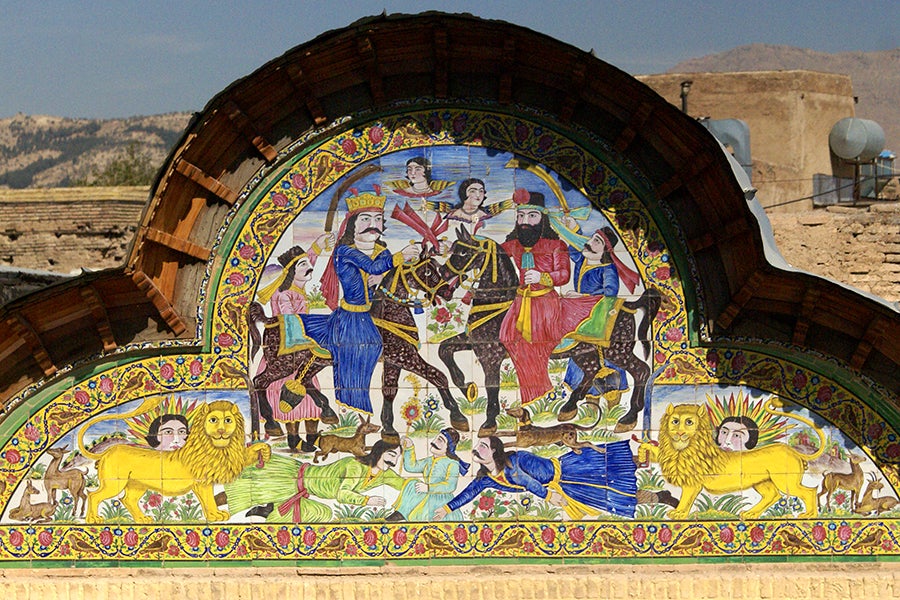Haft Rang
Atefeh Mousavi
Related Terms:
- Arabesque (vegetal designs and spiraling foliage)
- Bana’i (mason’s tile-and-brickwork)
- Hazarbaf (thousand-weave brickwork)
- Kashi (tile)
- Kashikari (tilework)
- Mina’i (enameled ceramics)
- Moʿarraq (tile mosaic)
Related Khamseen Video:
Marika Sardar, “A Samanid Epigraphic Dish,” Khamseen: Islamic Art History Online, published 28 August 2020.
Keelan Overton, “Persian Luster Tilework between the Field and Museum,” Khamseen: Islamic Art History Online, published 24 March 2022.
Denise-Marie Teece, “Monsoon Winds and Ming Porcelains: Collecting and Displaying Chinese Ceramics at the Mughal Court,” Khamseen: Islamic Art History Online, published 10 March 2022.
References:
Barakat, Heba Nayel and Zahra Khademi, eds. Qajar Ceramics: Bridging Tradition and Modernity. Kuala Lumpur, Malaysia: Islamic Arts Museum Malaysia, 2019. ![]()
Scarce, Jennifer. “Function and Decoration in Qajar Tilework.” In Islam in the Balkans, Persian Art and Culture of the 18th and 19th Centuries, edited by Jennifer Scarce, 75–86. Edinburgh: Royal Scottish Museum, 1978. ![]()
Seyed Mousavi, Atefeh. “Haft-rang Tile Workshop in Qajar Iran: Production and Craftsmen.” In History of Construction Cultures, edited by João Mascarenhas-Mateus and Paula Pires, 107–113. Oxford: Taylor and Francis, 2021. ![]()
Seyed Mousavi, Atefeh. Narrative Illustration on Qajar Tilework in Shiraz. Dortmund: Verlag für Orientkunde, 2018. ![]()
Seyf, Hadi. Persian Painted Tile Work From the 18th and 19th Centuries: The Shiraz School. Stuttgart: Arnoldsche Art Publishers, 2014. ![]()
Worksheet:
A worksheet for this video is available here.
Also visit the Khamseen Worksheets page here.
Citation:
Atefeh Mousavi, “Haft Rang,” Khamseen: Islamic Art History Online, published 20 April 2023.

Atefeh Seyed Mousavi received her Ph.D. from the University of Göttingen, Germany, in 2018. She previously worked as a lecturer of Islamic art history and architecture at Georg August University of Göttingen. Her research focuses principally on the visual and material culture of Iran from the early modern period to today. During extensive fieldwork in Shiraz, Dr. Mousavi wrote a catalog of the art of narrative tile painting. She also has published several articles on popular Iranian artworks and artists from the late 18th to the early 20th century, and her 2018 book, which was supported by a Barakat Trust grant, is entitled Narrative Illustration on Qajar Tilework in Shiraz.


